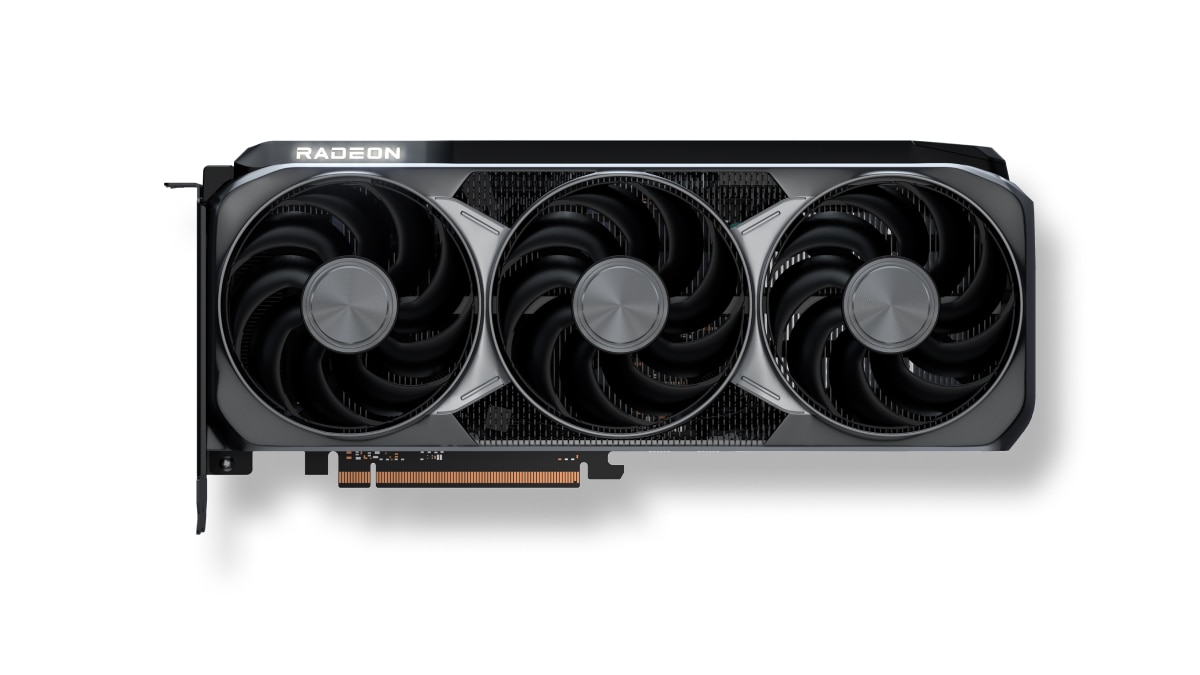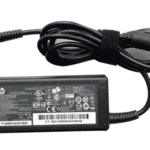AMD is set to launch the Radeon RX 9060 XT, a new mid-range graphics card, on May 21, 2025, at the Computex event. This card, based on AMD’s RDNA 4 technology, aims to compete with NVIDIA’s GeForce RTX 5060 Ti in terms of price and performance. The RX 9060 XT will offer two VRAM options, new architectural improvements, and support for the latest interfaces, making it a strong contender in the RDNA 4 series.
The launch of the RX 9060 XT is anticipated to please gamers looking for affordable options. The 8GB model is expected to be priced between $269 and $299, making it a budget-friendly choice for those seeking good performance. While details about the memory setup have shifted, reports now confirm that the 8GB version is still on track.
In terms of performance, the RX 9060 XT is rumored to deliver about half the power of the RX 9070 XT. This positioning suggests it will serve as an entry-level card within the RDNA 4 lineup, capable of handling most modern games at 1080p resolution. With only weeks left until the announcement, we can expect more specific information about its features soon.
RX 9060 XT Key Specs (Expected)
| Feature | Specification |
|---|---|
| GPU Architecture | RDNA 4 (Navi 44) |
| Compute Units | 32 |
| Stream Processors | 2,048 |
| Ray Accelerators | 32 |
| VRAM | 8 GB or 16 GB GDDR6 |
| Memory Speed | 20 Gbps |
| Memory Interface | 128-bit |
| Memory Bandwidth | ~320 GB/s |
| Infinity Cache | 32 MB (L3, unconfirmed) |
| Game Clock / Boost Clock | ~2.6 GHz / ~3.2 – 3.3 GHz |
| Interface | PCIe 5.0 x8 |
| TBP (Power) | Estimated 150W – 200W |
| Power Connector | 1x 8-pin |
| Display Outputs | 1x HDMI 2.1b, 2x DisplayPort 2.1a |
RDNA 4: Architecture Evolution
The RX 9060 XT will be AMD’s first mid-range card based on RDNA 4. While it’s not expected to bring radical architectural overhauls like ray tracing overhauls or AI cores rivaling NVIDIA’s Tensor cores, it will offer better performance-per-watt and higher clocks thanks to architectural efficiency and TSMC’s N4P node.
Expect the RX 9060 XT to leverage RDNA 4’s improved rasterization pipeline and matrix accelerators to support FidelityFX Super Resolution (FSR) 4 — AMD’s response to NVIDIA DLSS 3.5.
8GB vs. 16GB – The VRAM Dilemma
AMD is releasing the RX 9060 XT in both 8 GB and 16 GB GDDR6 variants. While the 8 GB model might be more affordable, early signs point to AMD prioritizing the 16 GB model at retail. That’s not just a marketing move — modern games like Alan Wake 2, Hogwarts Legacy, and The Last of Us Part I are pushing beyond 8 GB VRAM even at 1080p with ultra textures.
The 16 GB model will be particularly attractive to gamers targeting 1440p or dabbling in light 4K workloads — making it the smarter buy for future-proofing.
Performance Expectations
AMD is positioning the RX 9060 XT against NVIDIA’s RTX 5060 Ti — a card that has drawn criticism for shipping with just 8 GB of VRAM. Based on leaked performance targets and architectural gains, the RX 9060 XT is expected to land performance-wise between:
- NVIDIA RTX 4060 Ti (8 GB)
- AMD Radeon RX 7700 XT
In some raster workloads, it may even edge out the 4060 Ti. However, ray tracing is where NVIDIA still holds an advantage, though RDNA 4 aims to close that gap slightly with more efficient ray accelerators and enhanced shader scheduling.
FSR 4, Ray Tracing & Encoding Features
- FSR 4 Support: AMD will bundle its latest upscaling tech to improve frame rates while maintaining visual fidelity. Early reports suggest RX 9060 XT will support FSR 4 natively via hardware matrix units.
- Ray Tracing: Hardware support is confirmed, but expectations should be kept modest — this is a mid-range card, and ray tracing performance may not rival higher-end cards from either AMD or NVIDIA.
- Video Encoding: One possible downside — rumors suggest the RX 9060 XT might lack H.264/H.265 encoders and only support AV1, a move possibly made to reduce costs. If confirmed, that could limit its appeal to streamers and content creators.
Pricing Outlook
Official pricing is still under wraps, but multiple insider leaks suggest the following:
- RX 9060 XT (8 GB): ~$269 – $299 USD
- RX 9060 XT (16 GB): ~$329 – $379 USD
If AMD hits this pricing window, it could undercut the RTX 5060 Ti, especially considering the superior VRAM in the 16 GB model. This could make the RX 9060 XT a go-to choice for budget-conscious gamers who still want solid 1080p/1440p performance.
Release Timing
- Announcement: May 21, 2025, at Computex
- Retail Launch: Early to mid-June 2025 (tentative)
- Availability: Both 8 GB and 16 GB versions, with retail focus on 16 GB; OEMs may receive more 8 GB stock.
Final Thoughts: Who Is the RX 9060 XT For?
The RX 9060 XT is shaping up to be the sweet spot for mainstream gamers — offering high clock speeds, a modern architecture, and a VRAM advantage over NVIDIA’s latest 60-class card. It may not shatter performance records, but it doesn’t have to. If AMD prices it right, this card could be the go-to GPU for 1080p and 1440p gamers in 2025.
If you’re building a mid-range rig or planning an upgrade soon, the RX 9060 XT is absolutely worth waiting a few weeks for.
Key Takeaways
- The AMD RX 9060 XT is set to launch on May 21, 2025, with an expected price between $269-$299 for the 8GB model.
- Performance estimates suggest it will deliver roughly half the power of the RX 9070 XT, targeting 1080p gaming.
- The card represents AMD’s effort to provide a more affordable option in the new RDNA 4 architecture lineup.
AMD RX 9060 XT Launch Details
AMD’s upcoming RX 9060 XT graphics card is set for a May 2025 announcement with actual availability following shortly after. Consumers can expect two different memory configurations at varying price points.
Official Reveal and Announcement
AMD plans to officially unveil the Radeon RX 9060 XT on May 21, 2025, during Computex. This major tech event serves as the perfect platform for AMD to showcase its newest mid-range graphics offering to the global market.
The announcement will likely include detailed specifications, performance benchmarks, and a complete breakdown of the card’s capabilities. AMD typically uses these presentations to position their products against competitors – in this case, likely comparing the 9060 XT against NVIDIA’s offerings in the same price bracket.
AMD may also reveal information about the card’s power efficiency and technologies like FSR (FidelityFX Super Resolution) during the announcement. Partners like Sapphire, PowerColor, and XFX might showcase their custom designs shortly after the official reveal.
Launch Timing and Availability
While AMD plans to announce the RX 9060 XT on May 21, the cards won’t be available for purchase immediately. According to multiple sources, retail availability is expected in June 2025, giving AMD’s board partners time to prepare their custom designs.
This timing places the launch in the second quarter of 2025, potentially giving AMD a strategic advantage if they can beat NVIDIA’s competing products to market. However, actual availability will depend on manufacturing capacity and supply chain conditions.
The launch will likely follow AMD’s typical pattern with both reference models and AIB (Add-in Board) partner versions available. Initial stock may be limited as is common with graphics card launches, so interested buyers should stay alert for pre-order opportunities.
Initial Pricing and MSRP
AMD appears to be targeting different price points for the two memory variants of the RX 9060 XT:
- 8GB Model: Expected MSRP between $269-$299
- 16GB Model: Expected MSRP between $329-$379
This dual-pricing strategy mirrors what NVIDIA has done with some of its cards, giving consumers options based on their budget and needs. The 16GB variant commands a premium but offers future-proofing for games with higher memory requirements.
Board partners have reportedly been advised by AMD about these target price ranges. However, final retail prices may vary depending on custom cooling solutions, factory overclocks, and other premium features added by manufacturers.
The pricing positions the RX 9060 XT as a mid-range option, potentially offering good value for 1080p and 1440p gaming performance.
Key Specifications and Graphics Performance
The RX 9060 XT represents AMD’s latest RDNA 4 architecture in a mid-range package. Based on search results and industry information, this graphics card aims to deliver strong performance at an accessible price point, with variations in memory configurations affecting both performance and pricing.
Architecture and Core Features
The RX 9060 XT is built on AMD’s RDNA 4 architecture, which promises efficiency improvements over previous generations. The GPU uses the Navi 44 chip, positioning it as a mid-range offering in AMD’s lineup. While complete specifications aren’t officially confirmed, leaked information suggests the card will feature fewer compute units than its higher-tier siblings.
The boost clock speeds are expected to be competitive for its class, allowing for decent gaming performance at 1080p and 1440p resolutions. AMD has likely focused on optimizing the architecture for better performance per watt, which has been a strength in recent generations.
The card will support FSR 4 (FidelityFX Super Resolution) technology, AMD’s answer to NVIDIA’s DLSS, helping boost framerates in supported games through upscaling.
VRAM, Memory Speed, and Bandwidth
The RX 9060 XT will come in two memory configurations:
- 8GB model: Priced between $269-$299
- 16GB model: Priced between $329-$379
Both variants are expected to use GDDR6 memory with a 128-bit memory bus. Memory speeds should reach approximately 20 Gbps, providing adequate bandwidth for modern gaming. The difference in VRAM capacity will be significant for gamers who play at higher resolutions or with high-texture settings.
The memory interface width is relatively narrow at 128-bit, but the fast GDDR6 chips help maintain competitive memory bandwidth. For future-proofing, the 16GB model offers clear advantages as games continue to demand more video memory.
Power Requirements and Efficiency
The RX 9060 XT is designed as a mid-range card with reasonable power requirements. The total graphics power (TGP) is expected to be moderate, making it suitable for systems with standard power supplies of 550-650 watts.
Power efficiency should be improved over the previous generation thanks to the RDNA 4 architecture. This means better performance per watt, which translates to lower heat output and potentially quieter operation with less aggressive cooling needed.
The card will likely use a single 8-pin power connector, though some partner models might include additional power inputs for overclocking headroom. For gamers concerned about energy consumption, the improved efficiency should result in lower electricity costs during extended gaming sessions.
Performance Benchmarks and Ray Tracing
Based on early information, the RX 9060 XT is expected to deliver approximately half the performance of the RX 9070 XT. This positions it firmly in the mid-range segment, targeting smooth 1080p gaming with high settings and reasonable 1440p performance.
Ray tracing capabilities will be present but likely not as robust as higher-tier cards. The RDNA 4 architecture brings improvements to ray tracing hardware, but mid-range cards typically offer a more modest ray tracing experience compared to flagship models.
For esports titles, the card should easily deliver high framerates at 1080p. AAA games will run well at medium to high settings. The 16GB variant will handle texture-heavy games better than the 8GB model, especially at higher resolutions or with high-resolution texture packs.
Frequently Asked Questions
AMD’s upcoming RX 9060 XT graphics card is generating significant buzz with its expected May 2025 release date and promising specifications. Gamers are particularly interested in memory options, pricing, and performance capabilities.
When will the AMD RX 9060 XT be officially released?
Based on recent information, AMD plans to announce the Radeon RX 9060 XT on May 21, 2025. This represents a change from earlier reports that suggested a June 2025 launch window.
The timeline has apparently been moved up, giving gamers earlier access to this new graphics card. AMD typically makes cards available for purchase shortly after the official announcement.
What are the expected specifications of the AMD RX 9060 XT?
The RX 9060 XT will feature 32 compute units according to recent leaks. This positions it as a mid-range graphics card in AMD’s lineup.
One notable feature is that the card will come in two memory variants: 8GB and 16GB. This dual-option approach gives consumers flexibility based on their needs and budget.
The card will utilize AMD’s RDNA4 architecture, which should deliver significant improvements over previous generations in terms of efficiency and performance.
How does the AMD RX 9060 XT compare to its predecessors in performance?
The RX 9060 XT with its RDNA4 architecture is expected to be an excellent 1080p gaming card. Performance estimates suggest it will offer a substantial upgrade over the previous generation.
Gamers should see higher frame rates and better handling of graphically demanding titles compared to older cards like the RX 6600 XT. The additional compute units and newer architecture contribute to these performance gains.
Ray tracing capabilities are also likely improved, though detailed benchmarks aren’t yet available.
What is the anticipated retail price for the AMD RX 9060 XT upon launch?
AMD is reportedly discussing an MSRP between $329 and $379 for the 16GB version with its partners. This pricing positions it competitively in the mid-range market.
The 8GB variant is rumored to launch at a lower price point, making it more accessible to budget-conscious gamers. This tiered pricing strategy mimics approaches used by competitors like Nvidia.
Final pricing may vary based on retailer markup and initial supply availability.
Will the AMD RX 9060 XT be compatible with current gaming systems?
The RX 9060 XT will use the standard PCIe interface, ensuring compatibility with modern motherboards and systems. Most current gaming PCs should support this card without issues.
Power requirements are expected to be moderate, fitting within the capabilities of standard power supplies found in gaming systems. The card will likely require a direct power connection from the PSU.
Driver support will be provided for Windows 11 and 10, with possible Linux compatibility as well.
What improvements does the AMD RX 9060 XT offer for high-resolution gaming experiences?
While primarily positioned as a strong 1080p gaming card, the RX 9060 XT should handle 1440p gaming reasonably well, especially the 16GB variant. The additional memory will help with higher resolution textures.
Modern features like AMD’s FidelityFX Super Resolution (FSR) technology will likely be supported, helping to boost frame rates at higher resolutions. This upscaling technology can make higher resolution gaming more accessible.
The card’s improved architecture should also deliver better performance in tasks like video editing and content creation compared to previous generations.







